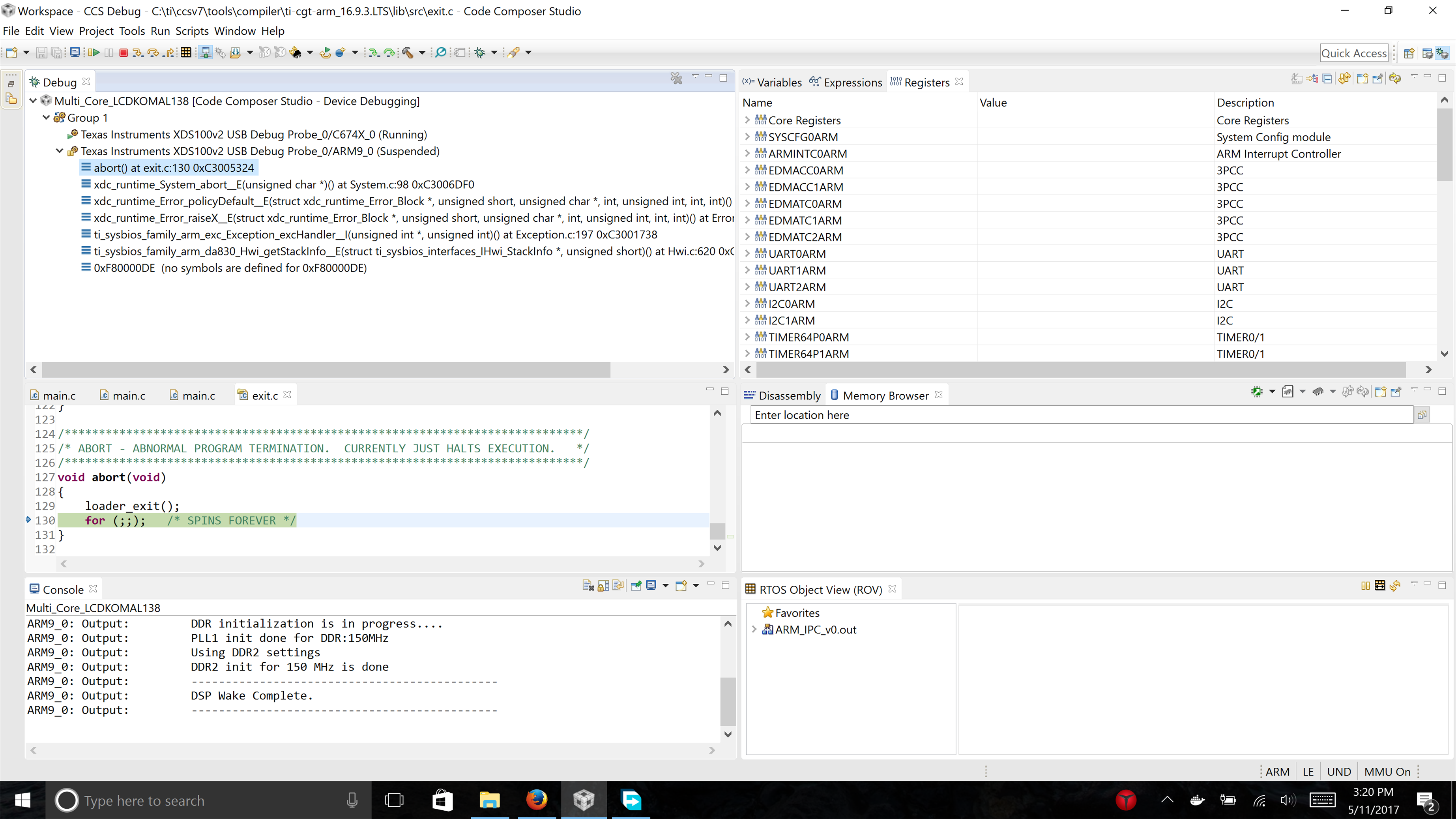Other Parts Discussed in Thread: OMAPL138
Hi,
I have been given a project recently related to communication systems. The board that we have decided to develop the project is LCDK OMAPL138. In this project we need both ARM and DSP chips to work together. The ARM chip will take care of networking and transmitting or receiving the data, and the DSP chip is going to take care of equalizing, filtering, etc which are computationally intensive.
I have been working with just the DSP chip of this board for quite a long time, but this is the first time I have decided to combine it with ARM chip. After searching about how to make the ARM work with DSP I came across the IPC examples in OMAP StaterWare, which is quite difficult to comprehend! Specially you can't trace back deceleration of some of functions or terms that is used in the IPC example.
The problems I am seeking help for are:
1. how to start a new project in CCS where I can develop a program for both ARM and DSP chip
2. how can I load the program into the chips and do debugging
I would appreciate any hint that could help me progressing this project.
Thanks


